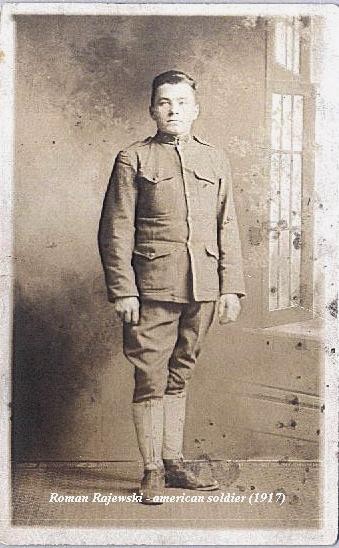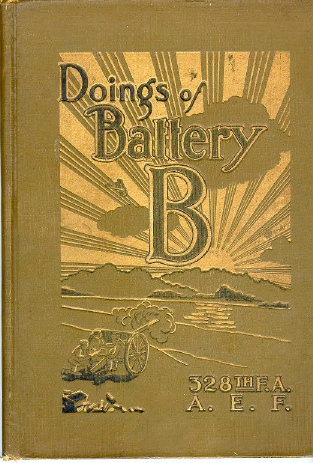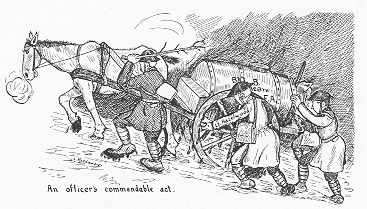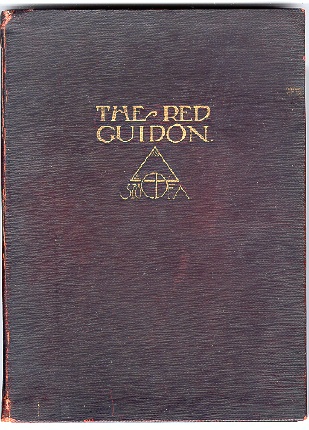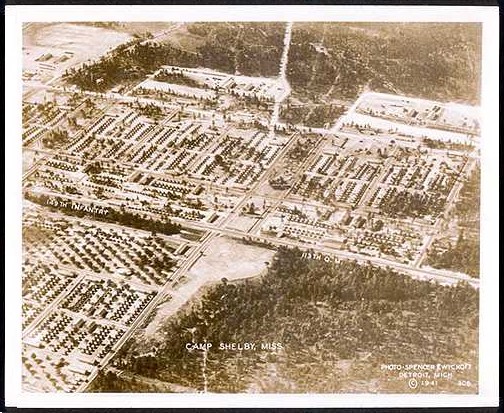HISTORY OF THE
THREE HUNDRED AND TWENTY-EIGHT FIELD ARTILLERY REGIMENT
WORLD WAR I
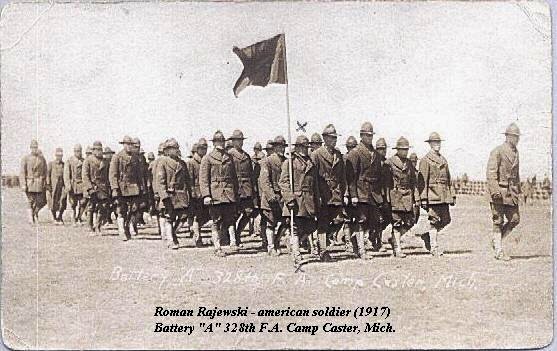
After the declaration of war by the United States on 6 April 1917, the War Department ordered the 85th Infantry Division activated at Camp Custer, Battle Creek, Michigan. Thus the 85th Division became known as the "Custer Division." On 5 August 1917, the 85th Division was established as part of the National Army and promptly began a period of organization and training for action in World War I that was to last until 10 July 1918.
The 328th Field Artillery was mobiled on September 1, 1917, as part of the 85th 'Custer' Division under the command of Major Lewis R. Dougherty. The 328th Field Artillery was a Regiment (75 MM) and part of the 160th Field Artillery Brigade.
After eleven months of training, the 85th Division received its movement orders early in July 1918. The 328th Field Artillery Regiment traveled to Camp Mills for last minute preparations for embarking overseas. On 30 July, 1918, they sailed on the HMS Mauretania and arrived in Liverpool, England, on 6 August 1918. Traveling across England, they boarded the USS Narragansett for a short voyage cross the English Channel on the 9th.
While in England, they learned that the 85th Division would not see action as a division. The 339th Infantry Reegeiment and the 1st Battalion of the 310th Engineers were sent to Russia. The remaining units were destined to go to France to function under the jurisdiction of the S.O.S., as the Fourth Depot Division.
In France, the 328FA marched and moved to various locations. The regiment was attached to the 167th Artillery Brigade of the 92nd Infantry Division(Colored). They were assigned a position in the front lines and on 5th November, the regiment fired their guns at the Germans for the first time. At 3:00pm on the 6th, they fired a salvo as the 92nd Division launched an attack on the town of Nonyon. By the 10th, the regiment was moved within 1 mile from the front line, where they were converted into heavy infantry. The next day, they received the news of the German surrender.
The 328FA remained in France as part of an occupation force. They were transformed into the 127th Provisional Regiment under the command of Lt.-Colonel Dunn, as part of the support of the 55th and 34th Infantry of the 7th Infantry Division. Later, they were assigned to the 91st Infantry Division and finally reunited with the 85th Infantry Division.
On 9 March 1919, they began their trip home from Camp D'Auvours, Belgium. Traveling by train and hiking, they reached the Forwarding Camp, 5km south of LeMans on the 10th. The next day, they hiked to Brest and after dinner hiked 5km to Camp Pontaneezan. There they boarded the HMS Ulua on 23 March, 1919 and were homeward bound. Returning to New York, they rested at Camp Mills before returning to Camp Custer, Michigan.
Following demobilization after the close of World War I, the 85th Division was constituted as an element of the Organized Reserves on 1 October 1921, with headquarters at Detroit, Michigan.
References: Click for more info on References, below.
"Doings of Battery B, 328th FA, A.E.F." by Edward Barry, published 1920.
"Red Guidon; 328 FA" published in 1920, 128 pages.
"The 85th Custer Division in WW2" by Schultz,
Official orders from 328th Field Artillery, obtained from the National Archives(see below).
Notice that a regiment was organized into 2 battalions of 4 batteries each.
328th Field Artillery Command
World War 1
Colonel Claudius M. Seaman (Feb 2, 1918 to muster out)
Lt-Colonel Guy A. Wainwright (No 18,1918 to April 24, 1919)
Regimental Adjutant: Victor I. Minnahan
Personal Adjutant: Villiam H. Fiske
Medical Detachment: Major Homer S. Hewitt
First Battalion: Captain Herbert W. Landon
Second Battalion: 1st Lt Thomas G. Amos
Dental: Captain Herbert Schiewtz
1st Battalion Commander: Major Grover C. Zimmerman
Adjutant: Capatin James G. Hays
2nd Battalion Commander: Major Emmet A. Donnelly
Adjutant: Captain Edmund Fitzgerald
Battery Commanders:
Battery A - Captain Warren C. Heustis
Battery B - Captain Sid. C. Cherrill
Battery C - Captain Robert R. Hutchison
Battery D - Captain Richard N. Holmes
Battery E - Captain John E. Johnston
Battery F - Captain Christopher S. Spofford
Regimental Sergeant-Majors
Evart H. Reid Harry A. Plaxton Theo. F. Vogel George L. Young
Regimental Supply Sergeants
Miles A. Nelson Harold P. McLean Blain Shimmel
Battalion Sergeant-Majors
1st Battalion: Alexander Vigneron & 2nd Battalion: Carl D. Leonard
_____________
References: "Doings of Battery B, 328th FA, A.E.F." by Edward Barry, published 1920.
Photo from World War I
Photo of Roman Rajewski, who was a member of the 328th Field Artillery, Battery A.
Roman Rajewski, lived in Chicago area when the war began. He was a member of the 328th Field Artillery when it left for England and then served in France and Belguim.
After the war, I think he returned to Poland. He had 3 children and 8 grand-children.
Photo shows him wearing the standard WW1 uniform with the stiff collar and leggings.
This photo and one at top of page provided courtesy of Krzysztof Roman Kupinski of Konin, Central Poland; the grandson of Roman Rajewski.
Photo at Top of page - approximately 40 men in formation.
Photo shows the Battery A of 328th Field Artillery, taken during their training at Camp Custer, Michigan, 1917. The soldiers are wearing heavy, winter overcoats and WW1 campaign hats.At first, I thought the "X" was the crossed cannons on an artillery flag in the background. Then I realized it was a mark on the photo to identify Roman Rajewski.
A little note: an old trick we used in my college drill team for taking photos was to have the group stand on one leg and pretend to be marching. The soldiers in this photo are obviously standing on one leg to pose for this old camera.
Photo of men of Battery B in 1918. From book "Doings of Battery B, 328th FA, A.E.F." |
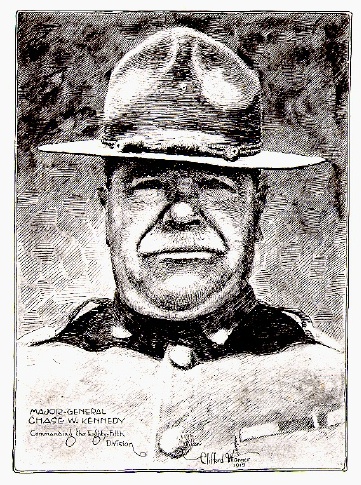 General
Chase Kennedy |
 |
A 1918 Canteen with a cover identified as 328FA. Label is marked with Crossed Cannon and 328 X D U.S. 7 for 328 FA, Battery D, Section 7.  |
